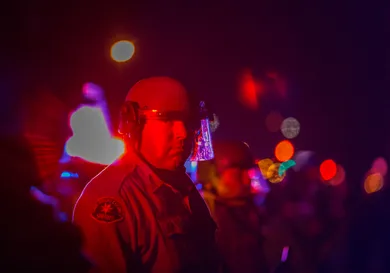Towards the end of 2016 in November, we reported on the deadly police shooting that took the life of Kieth Lamont Scott. Scott's killing sparked mass protests and outcry against police brutality and police shootings involving unarmed suspects. While no police officers were charged with killing Scott, one of the key pieces of the argument on both sides was whether or not Scott had a gun. No video evidence from the encounter shows Scott in possession of a gun, but, police reports claim a gun was found at the scene with traces of Scott's DNA on it.
No matter the discrepancy of whether or not he was armed, Scott's case falls in between the lines of a few categories that Americans and criminologists have been trying to understand for some time now. Those categories are fatal shootings of armed victims, fatal shootings of unarmed victims and fatal shootings of unarmed black victims. According to a report from International Business Times, researchers led by a group from the University of Lousiville analyzed 991 police shootings from 2015 in order to better understand how the roles of race and bias factored into these fatal encounters. The study focused on the race of unarmed victims so that researchers could determine whether or not police view members of different racial groups as more threatening than others. The study found that in 2015, half as many fatal shootings of black victims occurred than fatal shootings of white victims. But of those shooting incidents, there were more unarmed black victims than unarmed white victims.
Justin Nix, assistant professor of Criminal Justice at the University of Louisville says, "Black suspects were more than twice as likely as white suspects to have been unarmed, and that's after we controlled for things like mental illness, threat level, age, etc."
While several studies centered around this subject have been conducted before, and indicate that police were more likely to shoot black people in computer simulations, recent studies using high definition video simulations have concluded the opposite. Nix's study is one of the first of its kind as it utilizes data from the Washington Post's "Fatal Force" police database, which started collecting data on police shootings in 2015. The goal was to try to make sense of the mixed results of past studies by looking at individual instances where police made the decision to use deadly force.
Though Nix's study is state of the art, he told International Business Times that bias isn't the only possible explanation for the racial disparity of the results. Also, the data that Nix used from the Washington Post does not give data for all police shootings in 2015. And additionally, the sample size of the study Nix conducted was not ideal as the vast majority of individuals killed by police were armed, leaving only 93 cases of unarmed victims to examine. It is also worth mentioning the fact that prior to efforts like that of Nix, researchers and criminologists attempting to study fatal police encounters had to use data from local police departments that voluntarily reported information to the FBI. That data was notoriously incomplete and prompted FBI director James Comey to call the lack of data "ridiculous" in 2015.
For the record, 2016 ended with 963 fatal police shootings, just 28 less than 2015. You can view the full report on the study here in addition to the database from the Washington Post here.







